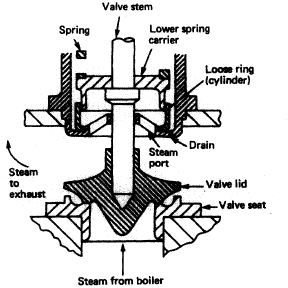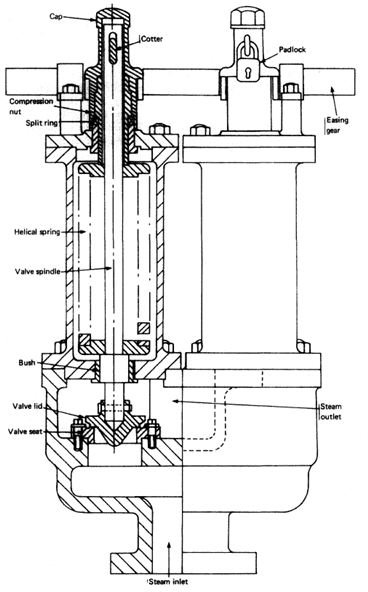Boiler safety relief valve setting and construction explained
Introduction
A safe running of a marine boiler is a pre-requisite for any boiler process. Boiler creates an utmost threat when the pressure of the boiler rises above the permissible limit. An accident involving a boiler blast has been the reason for many casualties and destruction in the past. To avoid such situations, boiler safety relief valves are used.
Boiler Safety Valve
A boiler safety valve is a spring loaded valve, which is always fitted in pairs on a common valve chest. The valve is so set that it releases all the steam generated by the boiler if the boiler pressure increases 10% above the pre-set level. The main advantage of a boiler safety valve is that it is the utmost form of reliable safety measure that a boiler can have, and which also shows positive action at any inclination. The safety valves are directly mounted on the boiler body, generally at the steam space.
Construction and Working
The spring loaded valve used as the safety valve, is a conventional type of valve with a helical spring, which is used to pre-set a pressure of the valve using a compression nut. All the safety valves, once set for a specific pressure limit, is locked and cannot be changed at a later stage.
The functioning of the valve is also similar to the conventional type of spring loaded valve, with the valve getting raised when the pressure of the steam rises above the pre-set mark. The spring gets compressed and the steam escapes through a waste pipe connected to the funnel, which opens out to the atmosphere.
Drawback in Operation
The process of opening of the safety valve is often faced with a drawback. When the valve is opened by the initial compression of the spring it stays in the same position only for few seconds.The force of the steam opens the valve further by compressing the spring. Hence more then necessary pressure and steam is relieved from the system. To counteract this phenomenon, a lip arrangement is provided on the valve lid, which provides a greater area for the steam to act on it. The force generated pushes the valve in the downward position and thus balances the upward force of the escaping steam.
Modified High Lift Safety Valve
The valve is provided with a manually operated lever which can be used to open the valve at times of emergency. Many modifications have been made till now to achieve a higher life as quick as possible. Most of this modifications are seen around the lower spring carrier, which comprises of a piston shaped arrangement for the steam to act on it underside. Rubber rings are provided around the cylinder to act as a sealing agent and a containing cylinder. The guide plate is provided with steam ports for the escape of the spring. The steam released due to the opening of the main valve acts on the underside of the piston to give it a higher lift. Once the pressure is relieved a bit, the spring force closes the valve quickly. The arrangement is so made that a bit of air is trapped in between the valve seat and the valve in order to create a cushion of steam.
A drain pipe, which opens outside, is also provided to release any condensed steam generated in the valve, in order to prevent any obstacle in opening or closing of the valve due to accumulation of the condensate.

References
Introduction of Marine Engineering 2nd Edition by D.A Taylor
